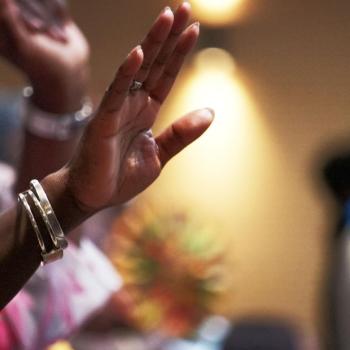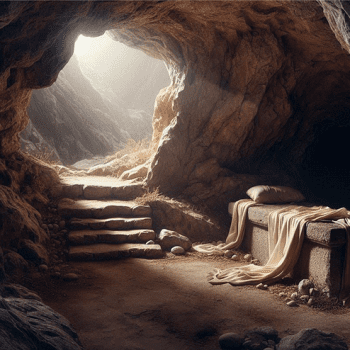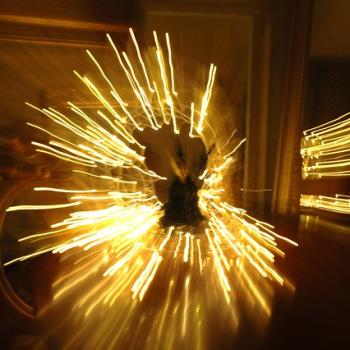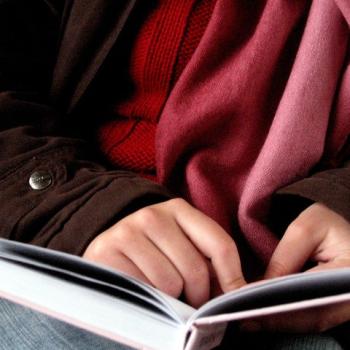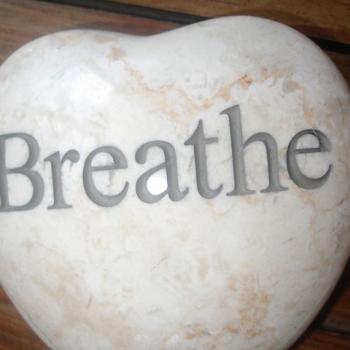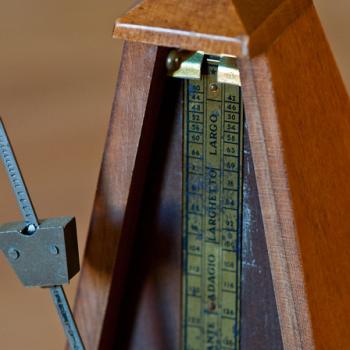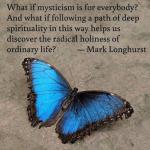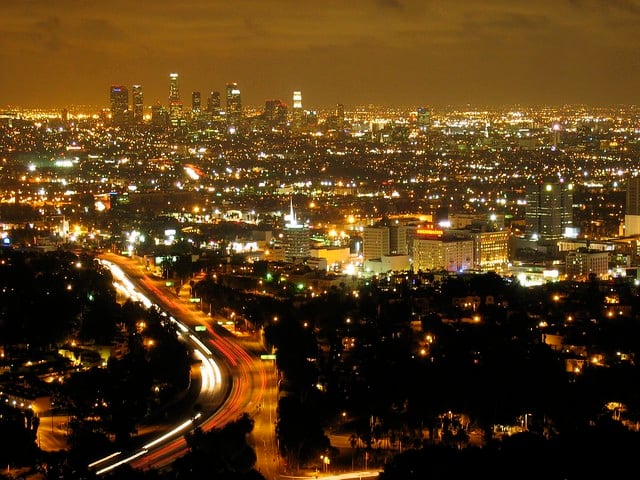
Being a Monk in the City
Some of us believe it is impossible to be a monk in the city.
We assume we need to get out of town and away from other people to really be contemplative. Do we need to travel into the country, to the mountains or the desert, into the woods or to the beach, to be monastic? Many of us are convinced we need to get as far as possible from other people to practice contemplation.
Getting away from other people and our typical routines might help us listen to sacred stillness. We want to leave distractions behind and think the best way involves physically leaving.
I appreciate how attractive wild places can be. It takes me hours to drive to the monastery where I am an Oblate. While my trip begins in the city, I leave it behind to head up the Pacific coast to Big Sur.
It is easy for us to believe spiritual life lives in wild, remote places.
I believe, though, I am called to be a monk in the city.
Contemplative practices are not fragile. We do not need to hide them or protect them from other people.
It may seem more pleasant for us to practice contemplation in a bucolic setting, but it is not necessary. We can be just as contemplative in the city as we can in the country.
Being contemplative in the city is about not paying attention to what distracts us. We may feel more distracted downtown than we do in the country, but it is not necessarily the case.
We can close our eyes and take deep breaths and pay attention to sacred stillness in the city.
Most of what distracts us from our contemplative practices comes from within us, not from the city around us.
A Monk in the City
I was not born contemplative, nor was I born in a large city.
I was taught from an early age it was more valuable to know things than to learn things. Learning was just a step on the path toward knowing while knowing was the goal of learning. It was far better to know the right answer than to be in the process of learning. Learning means we have not yet arrived at knowing.
Knowing was also more fun than learning. Learning requires patience, practice, and being open to new insights. Learning means we try new things and make mistakes, which just reinforces we do not already know the right answer.
People do not do well in school by learning, they do well by knowing.
The significant thing about knowing the answer is we have successfully completed learning. We no longer need to be open to new ideas when we already know the answers.
Moving from place to place, for school and for work, I searched for answers.
Eventually I realized my answers were not always right. I came to appreciate asking good questions more than having the right answers.
My seeking drew me to larger cities and to monastic life. I was received as a lay Oblate at a Benedictine monastery and hermitage in Big Sur, California.
I follow a rule of life which includes spiritual practices like regular prayer, reading, stillness, and solitude. At least once each year I leave the city where I live to spend time at the monastery.
I recognize a balance in seeking spiritual life in the everyday. The life of the city draws me more deeply into contemplative life, which draws me more deeply into city life.
The challenge for me is being a monk in the city.
Becoming a Monk in the City
The pattern and structure of monastic life gives us a framework to become contemplative in the city.
Everyday life in the city has a rhythm which is different from monastic life at the hermitage. Our daily and weekly schedules are not the same. We incorporate contemplative practices into our lives in our own ways.
It is important for us to take time each day to listen to sacred stillness. Our approach to everyday life is shaped by how we choose to become monks in the city.
Practices shape how we perceive our experiences. Becoming a monk in the city is about how we live the situations we experience. As we become more open to spiritual life within us and around us we perceive everyday life in new ways.
Becoming a monk in the city is not limited to sitting in stillness on a bench in the park all day. When I walk in the city each day I see people differently.
Being monks in the city is not simply a matter of slowing down, though it helps us pay attention. We practice listening and being open to the life around us.
Living As a Monk in the City
There is no magic formula or set of rules for living as a monk in the city. Some of us follow contemplative practices intended to help us take time to listen and pay attention. Our practices do not ensure we will live contemplatively in the city.
Our first step is setting aside what distracts us. It is easy for us to get caught up in the entertainments and attractions the city offers us. We pay so much attention to work and money, expectations and other people which distract us. Some of us become so wrapped up in everyday life we are too exhausted to even think about anything else.
Living as monks in the city means we pay attention to spiritual life within us and all around us.
Monks in the city live into the city’s spiritual life. We practice being open to the sacred stillness between the distracting words and other sounds, seeking rhythms in the noise.
The city is about more than the glittering lights flashing on its surface.
How will we practice being a monk in the city today?
When will we see ourselves as living as a monk in the city this week?
[Image by marcteer]
Greg Richardson is a spiritual director in Southern California. He is a recovering assistant district attorney and associate university professor, and is a lay Oblate with New Camaldoli Hermitage near Big Sur, California. Greg’s website is StrategicMonk.com and his email address is [email protected].



